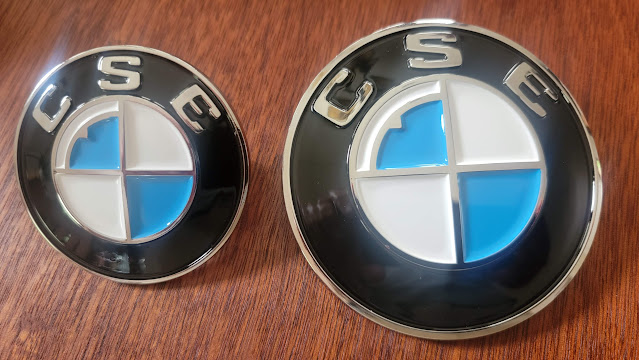Love that battery
There are 350 DC volts of Telsa LiIon batteries in my car but I need a 12 volt source to kick off the electronics that energize all the complex systems such as the precharge controller and traction contactors. Therefore, I use a small LiIon 12v battery designed for a motorcycle. The problem is, I keep some things, like my Raspberry Pi gauge computer constantly running so that everything works instantly at the turn of the key and that drains the little 30 Ah battery pretty quickly, like in a day or two.
 |
| The Battery Lover in its little 3D printed box |
I could plug the battery into a trickle charger attached to my house but that's a pain in the butt and I have all that energy in the Tesla batteries that I can harness. There's already a DC/DC converter in the car that converts the Tesla 350 volts DC down to a usable 13.8v DC. All I have to do is turn it on and there will be plenty of voltage (and 1500 watts) of current) to charge the smaller battery. The battery itself has a built in battery management system that prevents overcharging.
 |
| I have enough juice in the Tesla batteries to keep my little 12v battery alive for years |
Enter the Battery Lover, a custom bit of electronics that monitors the small battery's voltage and pulls power from the Tesla packs when necessary to recharge it. Paul did the original battery lover design, I just needed to understand how it worked and build my own version.
The battery lover is a simple Arduino Nano microprocessor that reads the battery voltage via a voltage divider to lower the up to 13.8v down below the 5v the Arduino can handle. That lowered voltage is read into the Arduino through a built-in 10-bit Analog-to-Digital Converter (ADC) . In the Arduino code I use math to convert the digital value back up to the accurate voltage number. When the sensed voltage falls below 11.9 volts, the Arduino sends a signal to an opto-isolator that energizes a relay and turns on the DC/DC converter (an EV's equivalent of an alternator) for 30 minutes. Add a 3d printed box, voltage display, and a charging LED and you have a neat little solution that sits in the trunk and will keep the battery topped up for months.
 |
| Testing. Voltage below 12 (11.4) so LED and relay on |
I wasn't familiar with passive voltage divider circuits but there are really very simple -- just two resistors. The difference in value between the two resistors determines the voltage drop, according to the formula below. Be sure to use resistors with sufficient power handling ability. I started off with 100 and 20 ohm resistors, for a drop of roughy 1/5 but the low resistance values resulted in the resistors getting hot as the drawn off the voltage was converted to heat. I then switched to 10k and 2k ohms and all was fine.
 |
| A simple passive voltage divider circuit |
 |
| The voltage divider formula |




